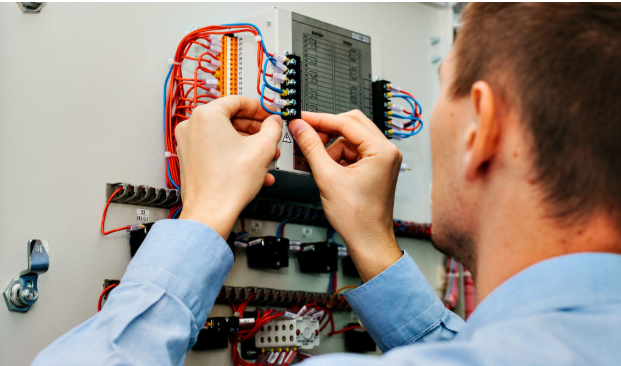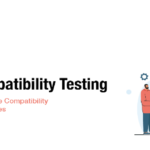Software developers must optimize application performance and user experience across multiple devices in the ever-changing landscape. This is where real device testing happens, a crucial aspect of software development. Mobile app testing evaluates software on real hardware devices, not simulators or emulators. This method shows how an app works in real-world use.
However, real device testing is loaded with its own set of challenges and pitfalls. The variety of devices is a major issue. Test coverage is challenging due to the wide variety of operating systems, screen sizes, resolutions, and hardware specifications. Obtaining and maintaining a diverse testing device set is expensive and difficult. Other issues include network complexity and real-world device performance variability.
This blog helps developers, testers, and project managers improve device testing reliability, efficiency, and coverage. This exploration should help software developers optimize app performance across devices and give users the best experience.
Table of Contents
What Is Real Device Testing?
Real device testing entails testing software on actual mobile devices, as the name would imply. This technique is crucial to software development and quality assurance because it lets developers and testers see how an app works on real devices. On actual devices, tests are conducted for hardware, OS compatibility, usability, performance, and application functionality.
The primary distinction between emulator/simulator and real device testing is the testing environment. Emulators and simulators simulate mobile device hardware and software. They facilitate early-stage testing, allowing developers to quickly and cheaply test and debug applications.
Real devices also accurately represent various hardware performance levels, and network conditions and how these impact the application’s behavior. Emulators and simulators usually do not accurately simulate real-world operating conditions, such as memory usage, CPU fluctuations, and interaction with other applications, because they usually run on more powerful hardware.
To ensure software performance and user experience, real device testing is essential. It assists in locating problems that might not be apparent in virtual settings. Device testing can reveal issues with touchscreen responsiveness, gesture controls, and application behavior under different battery conditions. It also displays the app’s performance in various locations and on Wi-Fi, 4G, and 5G networks.
To ensure application compatibility with the wide range of devices on the market, real device testing is necessary. This includes testing various screen sizes, resolutions, OSes, and hardware. To retain and satisfy users, developers must ensure that the app provides a consistent and seamless user experience across all devices.
Common Challenges in Real Device Testing
Here are some of the common challenges associated with real device testing. Let us take a quick look at each of them –
Challenge 1: Device Diversity and Fragmentation
Real device testing is difficult due to device diversity and fragmentation. The market has devices with various screen sizes, resolutions, processors, memory capacities, and operating systems. Users often use both legacy and modern operating systems, causing fragmentation.
Testing across this wide range of devices and configurations is essential for consistent and reliable application performance for all users. However, this diversity makes it difficult to choose the right devices for testing and ensure coverage. Missing out on testing a device or OS version that a large portion of the target audience uses can result in poor user experiences and market share loss.
Challenge 2: Accessibility and Cost
Accessibility and cost are major device testing obstacles. Purchasing, maintaining, and updating a wide range of testing devices requires significant investment. Small and medium-sized organizations and developers may not be able to afford such a wide range of devices.
The logistical challenge of managing a large inventory of devices with different update and repair needs is also complicated. This challenge often forces development teams to limit real device testing, missing critical bugs that could affect user satisfaction and retention.
Challenge 3: Testing Environment and Network Issues
Device testing also requires replicating real-world network environments. Network transitions, Wi-Fi, and 4G or 5G mobile data networks occur in real life. In addition, the time of day and a user’s location can significantly affect the network’s stability and speed.
Testing an application’s performance in these different scenarios is crucial to ensure a smooth and consistent user experience. However, their complexity makes it difficult to duplicate these conditions in a testing environment accurately. The application’s behavior must be tested in different locations and environmental conditions like light, temperature, and humidity, affecting device performance and user interaction.
Pitfalls to Avoid in Real Device Testing
Let us take a quick look at all the pitfalls to avoid in case of real device testing –
Pitfall 1: Overlooking Device-Specific Features
Overlooking device hardware features is a major mistake in real device testing. Each device has its own hardware capabilities, such as varying camera qualities, sensor types, processor speeds, battery life, and more. Not considering these differences can cause major issues.
A powerful processor may run an app smoothly but crash or lag on a weaker processor. Gyroscopes and fingerprint scanners are also hardware-dependent and not available on all devices. Avoiding these hardware characteristics can result in poor application performance, hurting user experience and the app’s market position.
Pitfall 2: Neglecting User Experience On Different Devices
Ignoring the differences in the user experience across various devices is another big mistake. Application performance and adaptability to screen sizes, resolutions, and operating system interfaces affect user experience.
On a high-end device, an app might look great, but it might be distorted or difficult to use on a lower-resolution device. Touch sensitivity and responsiveness vary between devices, affecting app usability. Neglecting these aspects can frustrate users, hurting retention and application success.
Pitfall 3: Inadequate Test Coverage
Inadequate test coverage is one significant risk that could have far-reaching consequences. The vast range of devices and operating system versions on the market makes it difficult to ensure thorough test coverage. However, if this is not done, hidden flaws and issues can appear only on specific hardware or under specific conditions.
This oversight could be particularly dangerous if most of the population uses untested hardware or OS versions. Inadequate test coverage can cause major functionality issues, crashes, and harm to a brand’s reputation when end users encounter these bugs. Testing must cover as many devices and scenarios as possible to ensure a consistent and reliable experience across all platforms, prioritizing market data and user demographics.
Strategies for Overcoming Challenges in Real Device Testing
Given below are some of the strategies that can help overcome the challenges involved in real device testing –
Strategy 1: Leveraging Cloud-Based Device Farms
Device diversity and high costs can be overcome with cloud-based device farms. These cloud platforms allow testers to run their apps on a wide range of real devices without owning them. This method reduces the cost and logistical challenges of stocking many devices.
Cloud-based device farms allow testing on different devices, operating systems, and screen sizes. They also scale, letting teams adjust their testing scope. These platforms also have advanced testing tools and analytics for faster, more thorough testing.
Strategy 2: Prioritizing Devices Based on Market Data
Prioritizing devices for testing by market data is also important. Teams can concentrate their testing efforts where they are most effective by examining data on the target audience’s most frequently used devices, operating systems, and configurations.
This approach maximizes testing effectiveness by ensuring the application is optimized for the devices that prospective users use most frequently. Market analytics tools can help teams prioritize devices for testing based on current trends and user preferences.
Strategy 3: Implementing Continuous Testing And Integration
Continuous testing and integration ensure thorough and efficient testing. Teams can find and fix problems more quickly and effectively by automating the continuous testing of the application as new code is integrated and integrating testing into the early phases of the development cycle.
It reduces the time and cost of fixing errors later in the development process by facilitating the early identification of flaws. Continuous testing ensures real-world application testing, improving product reliability and quality.
Strategy 4: Embracing Automation Where Appropriate
For the best testing results, manual and automated testing must be balanced. Manual testing is necessary for user experience and complex application features, but automated testing can improve efficiency and coverage.
Testers can focus on more nuanced and user-centric testing with automated tests for repetitive tasks and regression testing. Where appropriate, teams can automate testing to improve efficiency and quality while maintaining application integrity through manual testing. This balanced approach creates a more robust, user-friendly app that works well on many real devices.
Best Practices For Effective Real Device Testing
Real device testing requires overcoming challenges and following best practices to ensure thorough and efficient testing. Some important practices are:
Keeping up with new devices and OSes is essential. The mobile device market changes frequently as new models and operating systems are released. Testing teams should keep an updated device inventory and use the latest and most popular devices.
This ensures that the app works properly and is compatible with new hardware and operating systems as they become available with the help of mobile device lab. As many of the user base may still use older devices and OS versions, it is important not to ignore them.
User feedback is invaluable in testing. It offers practical insights into how users engage with the program, the problems they run into, and the features they find most useful. Including this feedback in testing cycles helps identify and prioritize improvements.
Getting direct feedback from end users by routinely monitoring user reviews, support tickets, and feedback forums is possible. This information can be used to improve testing strategies and concentrate on areas that greatly impact user satisfaction.
Emulator and simulator testing is just as important as real device testing, particularly in the early development phases, to ensure the application functions properly in real-world scenarios.
Emulators and simulators help test and debug code quickly, especially for rapid iterations. A balanced testing process using emulators for initial testing and development and real devices for final testing and quality assurance can be comprehensive. This balance ensures that the application is functional and optimized for performance.
Testing is essential to the mobile app development process because it guarantees that the applications fulfill the highest quality and user experience requirements. The difficulties in app testing have grown significantly as mobile devices become more diverse and complex. This is where LambdaTest comes into play.
A comprehensive cloud-based solution for testing mobile apps, LambdaTest gives users access to various devices and browsers. Developers and testers can effectively handle the difficulties of fragmented devices and different operating systems by utilizing these platforms, guaranteeing comprehensive testing without requiring an extensive physical inventory of devices.
The platform’s capacity to enable smooth integration with diverse development tools amplifies the efficacy of the testing procedure, rendering it an invaluable resource in the mobile app development process.
Conclusion
It is impossible to overestimate the significance of overcoming obstacles in real-world device testing. As we have seen, accurate device testing is complicated, involving everything from the diversity of devices and accessibility concerns to the nuances of simulating real-world scenarios.
However, developers and testers can overcome these obstacles by implementing the best practices and strategies described in this blog, which include using cloud-based device farms like LambdaTest, prioritizing devices based on market data, implementing continuous testing, and striking a balance between manual and automated testing.
The way real device testing progresses demonstrates software development’s dynamic nature. The methods and resources for efficient testing must change along with the introduction of new gadgets and technologies. Leading this evolution are platforms such as
LambdaTest provides solutions that can be tailored to meet the evolving requirements of mobile app testing. By implementing these innovations, developers, and testers can ensure that their applications function as intended and offer the excellent user experience that is crucial in today’s competitive market. Software quality determines the success of any mobile app in the digital age, so rigorous real-device testing is essential.












